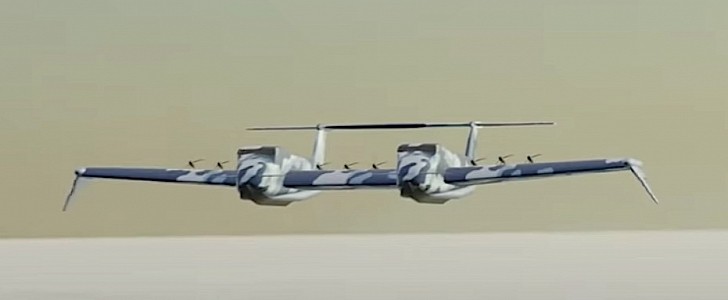Back in 2018, at a time when Russia was still a normal country in a normal world, word broke of the people there working on something called Orlan. We’re not talking about the drones that presently keep popping up in Ukrainian fields, but about a brand new type of ground effect vehicle.
We have no information on where the Orlan is now in its development cycle, given everything that’s going on, but back then, we were told these machines should have been ready sometime by 2027, and would have been capable of carrying cruise missiles to be launched against Russia’s enemies.
The Orlan would have been nothing more than a more modern iteration of the likes of the Caspian Sea Monster, an ekranoplan the Russians have been developing in the late 1960s.
At the time of writing, there’s no machine of this kind and size (back in the 1960s, the Russian one was the largest aircraft in the world, measuring 92.00 meters/301 feet in length and boasting a wingspan of 37.60 meters/123 feet) flying over the waters of the world, but it soon might be. And we’re not talking about the Orlan.
Last week, America’s premier defense agency, DARPA, released a few details on what it calls “an affordable, innovative, and disruptive seaplane.” To be developed as part of a program called Liberty Lifter, it’s nothing more than a ground effect vehicle. That would be a machine capable of moving fast and hovering above a level surface. It’s a combination between a plane and a boat that should provide several distinct advantages for the military using it, including being invisible to sonar and radar.
The Liberty Lifter is envisioned as capable of flying at 100 feet (30 meters) above the water, but with the ability to climb to 10,000 feet (3,000 meters) if need be. The Americans do not necessarily plan to use the twin-fuselage as an offensive weapons platform, but as a means of transport for large payloads (100+ tons).
At the time of writing, that’s all we know about the program, and we have no info on when DARPA plans to have a prototype ready. We do have an official and short video animation of the thing in action, and you can watch it below.
The Orlan would have been nothing more than a more modern iteration of the likes of the Caspian Sea Monster, an ekranoplan the Russians have been developing in the late 1960s.
At the time of writing, there’s no machine of this kind and size (back in the 1960s, the Russian one was the largest aircraft in the world, measuring 92.00 meters/301 feet in length and boasting a wingspan of 37.60 meters/123 feet) flying over the waters of the world, but it soon might be. And we’re not talking about the Orlan.
Last week, America’s premier defense agency, DARPA, released a few details on what it calls “an affordable, innovative, and disruptive seaplane.” To be developed as part of a program called Liberty Lifter, it’s nothing more than a ground effect vehicle. That would be a machine capable of moving fast and hovering above a level surface. It’s a combination between a plane and a boat that should provide several distinct advantages for the military using it, including being invisible to sonar and radar.
The Liberty Lifter is envisioned as capable of flying at 100 feet (30 meters) above the water, but with the ability to climb to 10,000 feet (3,000 meters) if need be. The Americans do not necessarily plan to use the twin-fuselage as an offensive weapons platform, but as a means of transport for large payloads (100+ tons).
At the time of writing, that’s all we know about the program, and we have no info on when DARPA plans to have a prototype ready. We do have an official and short video animation of the thing in action, and you can watch it below.













